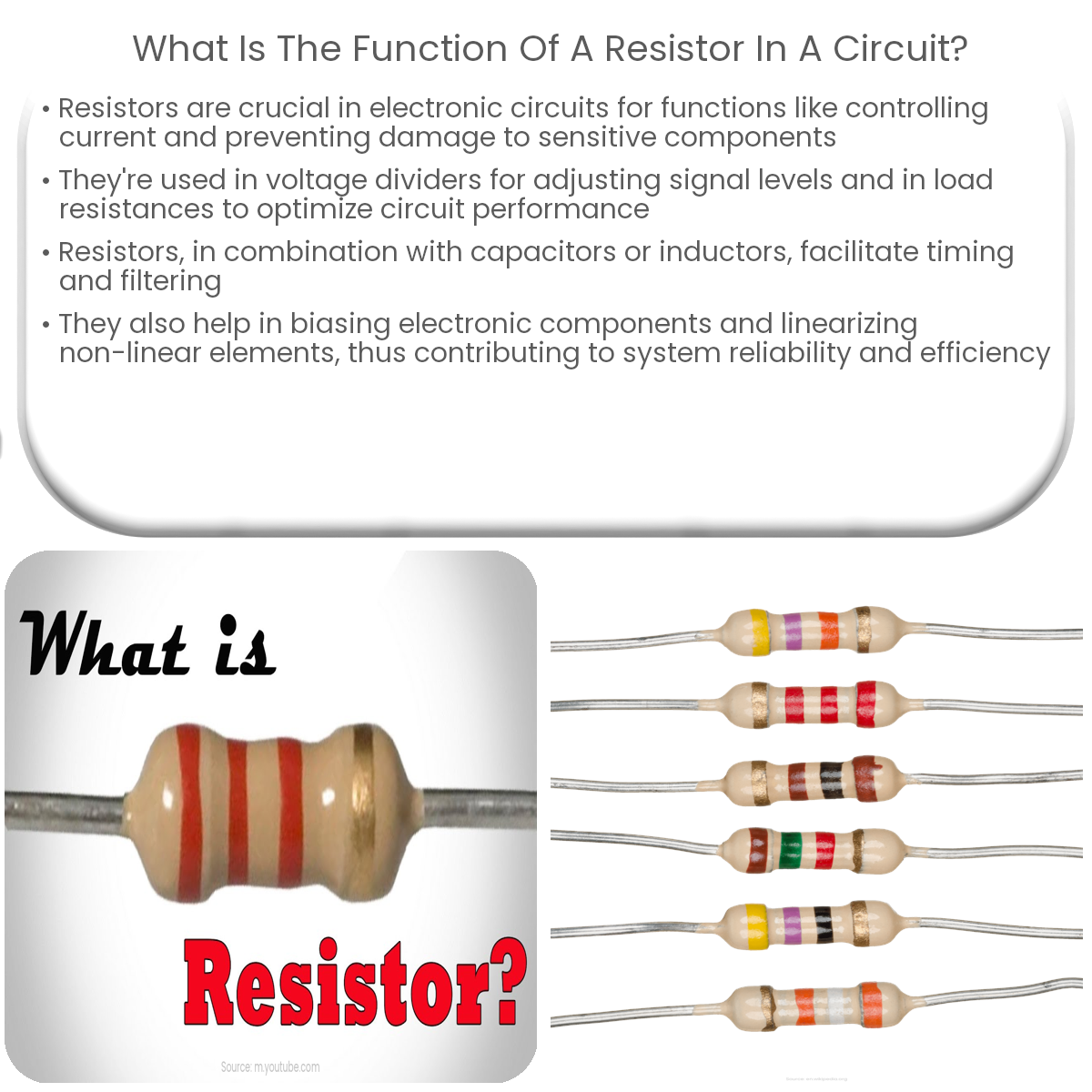Resistors in circuits control current flow, divide voltage, simulate loads, establish timing and filtering characteristics, and bias active components.
Introduction to Resistors in Circuits
Resistors are fundamental electronic components that play a crucial role in circuit design and operation. They are used to limit or control the flow of electric current within a circuit. This article will discuss the various functions of resistors in electronic circuits.
Current Limiting
One of the primary functions of resistors is to limit the flow of electric current. By introducing a resistor with a specific resistance value into a circuit, the current can be controlled according to Ohm’s Law (V = I × R), where V is voltage, I is current, and R is resistance. By controlling the current, resistors can prevent damage to sensitive components and ensure safe operation.
Voltage Division
Resistors are commonly used in voltage divider circuits, which reduce the voltage across specific points in a circuit. A voltage divider consists of two or more resistors connected in series. The voltage across each resistor is proportional to its resistance value, and the sum of these voltages equals the source voltage. This principle is used in various applications, such as adjusting signal levels, biasing transistors, and providing reference voltages.
Load Resistance
In many circuits, resistors serve as load resistances, which are used to represent the electrical load of a device or system. Load resistances help designers analyze and optimize circuit performance by simulating real-world conditions. They can also be used to ensure that a circuit provides the correct voltage and current levels for proper operation of connected devices.
Timing and Filtering
Resistors, when combined with capacitors or inductors, form RC and RL circuits, which are used for timing and filtering applications. In timing circuits, resistors and capacitors work together to create a time constant, which determines the rate at which the circuit charges and discharges. This property is useful in applications like oscillators and timers. In filtering circuits, resistors help remove unwanted frequency components from signals, such as noise reduction or signal conditioning.
Biasing and Linearization
Resistors are used to bias electronic components, such as transistors, by setting appropriate voltage and current levels for correct operation. Biasing is essential for maintaining the desired performance and stability of active components. Additionally, resistors can help linearize the response of non-linear components, such as diodes, by mitigating the effects of their non-linear characteristics.
Conclusion
Resistors play a vital role in various aspects of electronic circuit design and operation. They limit and control current, divide voltage, simulate loads, establish timing and filtering characteristics, and bias active components. A thorough understanding of the functions of resistors in circuits is essential for designing efficient and reliable electronic systems.


